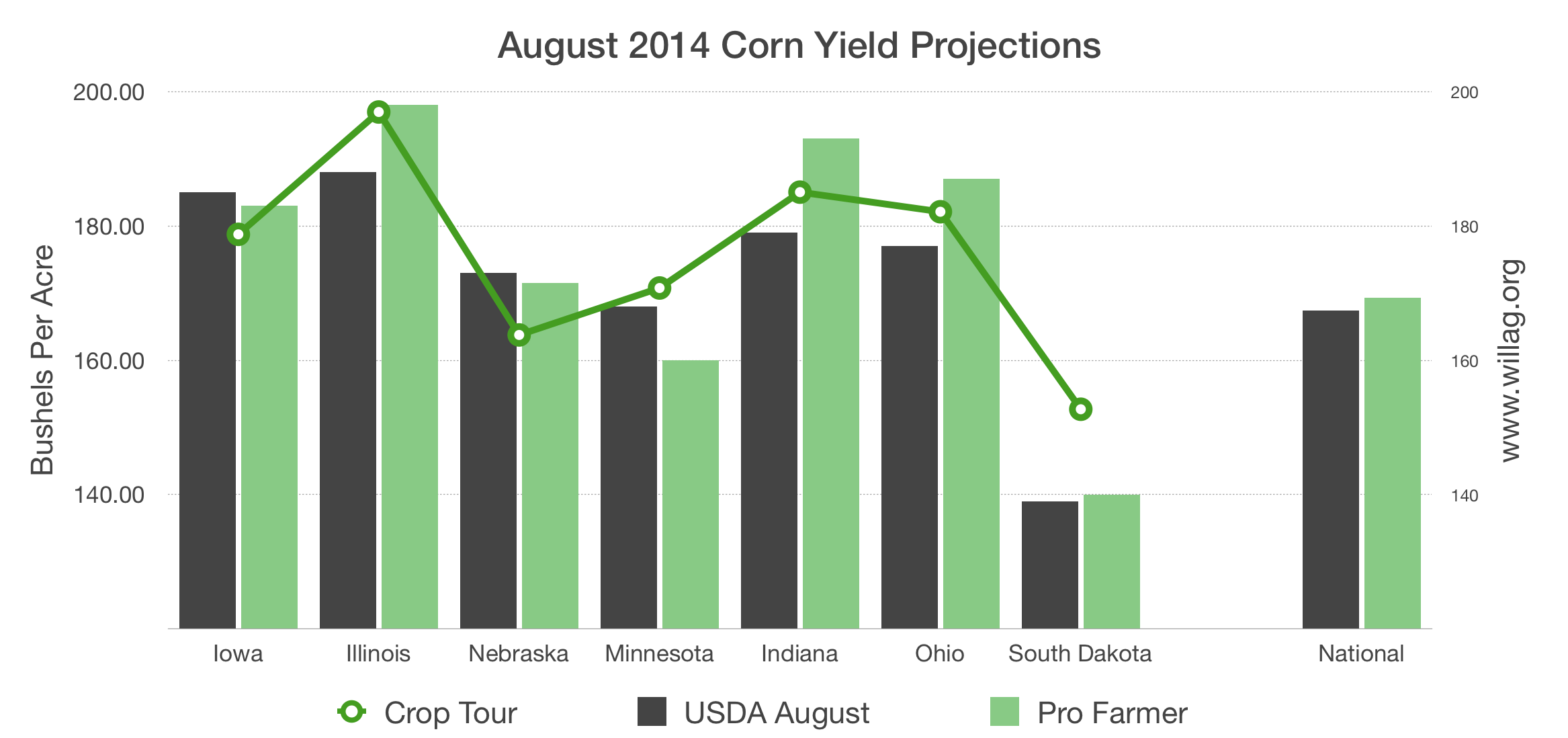USDA’s release of the Quarterly Grain Stocks report on June 30 will provide an estimate of corn stocks in storage as of June 1, 2017. Since many of the consumption categories for corn can be derived from data provided during the marketing year, this estimate provides the ability to calculate the magnitude of feed and residual use of corn during the third quarter. The calculation offers the basis for evaluating the probable feed and residual use during the entire marketing year and imparts information on the potential size of ending stocks.
While the information imparted by the June Acreage report released on the same day will likely eclipse the Quarterly Grain Stocks report, the estimated corn stocks have important implications for the current marketing year.
The supply of corn available during the first half of the 2016–17 marketing year is the base for estimating June 1 stocks. Corn stocks at the beginning of the quarter were estimated at 8616 million bushels in the March Grain Stocks report. Currently, the Census Bureau estimates for corn imports are only available through April. In the first half of the marketing year, corn imports totaled 26 million bushels. Imports for the third quarter might have been around 12 million bushels. By combining imports with the beginning stocks, total available supply for the second quarter comes in at 8628 million bushels.
An estimate of corn exports for the third quarter is based on the cumulative weekly export inspections estimate available for the entire quarter. Cumulative marketing year export inspections through May totaled approximately 1738 million bushels. During the first eight months of the marketing year, total Census Bureau corn exports were greater than cumulative export inspections by 45 million bushels. Assuming the margin is maintained through May, corn exports through three quarters of the year equaled 1783 million bushels. Since exports in the first half of the marketing year totaled 1095 million bushels, the estimate for third quarter corn exports equals 688 million bushels.
The Grain Crushing and Co-Products Production report released on June 1 estimated corn used for ethanol and co-product production during March and April of 2017 at 893 million bushels. Weekly estimates of ethanol production provided by the Energy Information Administration indicates ethanol production increased by 5.5 percent in May 2017 from the preceding year. By calculating the amount of corn used to produce ethanol from these May numbers, corn used for ethanol production in May was approximately 449 million bushels. Total use for the quarter is estimated at 1342 million bushels.
Corn used to produce other food and industrial products during the 2016–17 marketing year is projected at 1470 million bushels by the USDA. Using historical corn use data, typically around 75 percent of the final marketing year food and industrial products use occurs in the first three quarters of the marketing year. If this historical pattern holds and the USDA projection is correct, corn use for the first three quarters of the marketing year totaled 1102 million bushels. Corn use during the first half equaled 689 million bushels which set the third quarter use estimate at 413 million bushels.
The current USDA projection for feed and residual use sits at 5500 million bushels. The historical pattern of feed and residual use in corn may provide some indication of the third quarter use. For the five previous marketing years, use during the first three quarters of the marketing year ranged from 90.5 – 94.2 percent of the marketing year total with an average of 91.6 percent. Third quarter feed and residual use ranged from 15 to 21 percent of the total use over this time span. For this analysis, the 91.6 percent average during the first three quarters of the previous five marketing years is used to calculate expected feed and residual use during the third quarter. If the USDA projection is correct, feed and residual use during the first three quarters of the 2016–17 marketing year totaled 5038 million bushels. Feed and residual use equaled 3797 million bushels in the first half. Therefore, the third quarter estimate totals 1241 million bushels.
By adding the estimates for exports and domestic uses, the total use of corn during the third quarter is estimated at 3684 million bushels. The total use estimate for the third quarter places June 1 corn stocks at 4944 million bushels. At this level, June 1 stocks come in 222 million bushels larger than the estimated 2016 June 1 corn stocks.
A June 1 corn stocks estimate that supports the USDA projection of 5500 million bushels of feed and residual use during the 2016–17 marketing year is considered neutral for corn prices. An estimate of corn stocks that deviates more than 100 to 150 million bushels from market expectations would provide an indication of changes in domestic feed and residual and alter expectations for ending stocks. This analysis indicates an estimate near 4944 million bushels should not change expectations that feed and residual use is on track to meet the marketing year projection.








